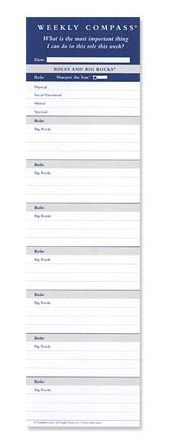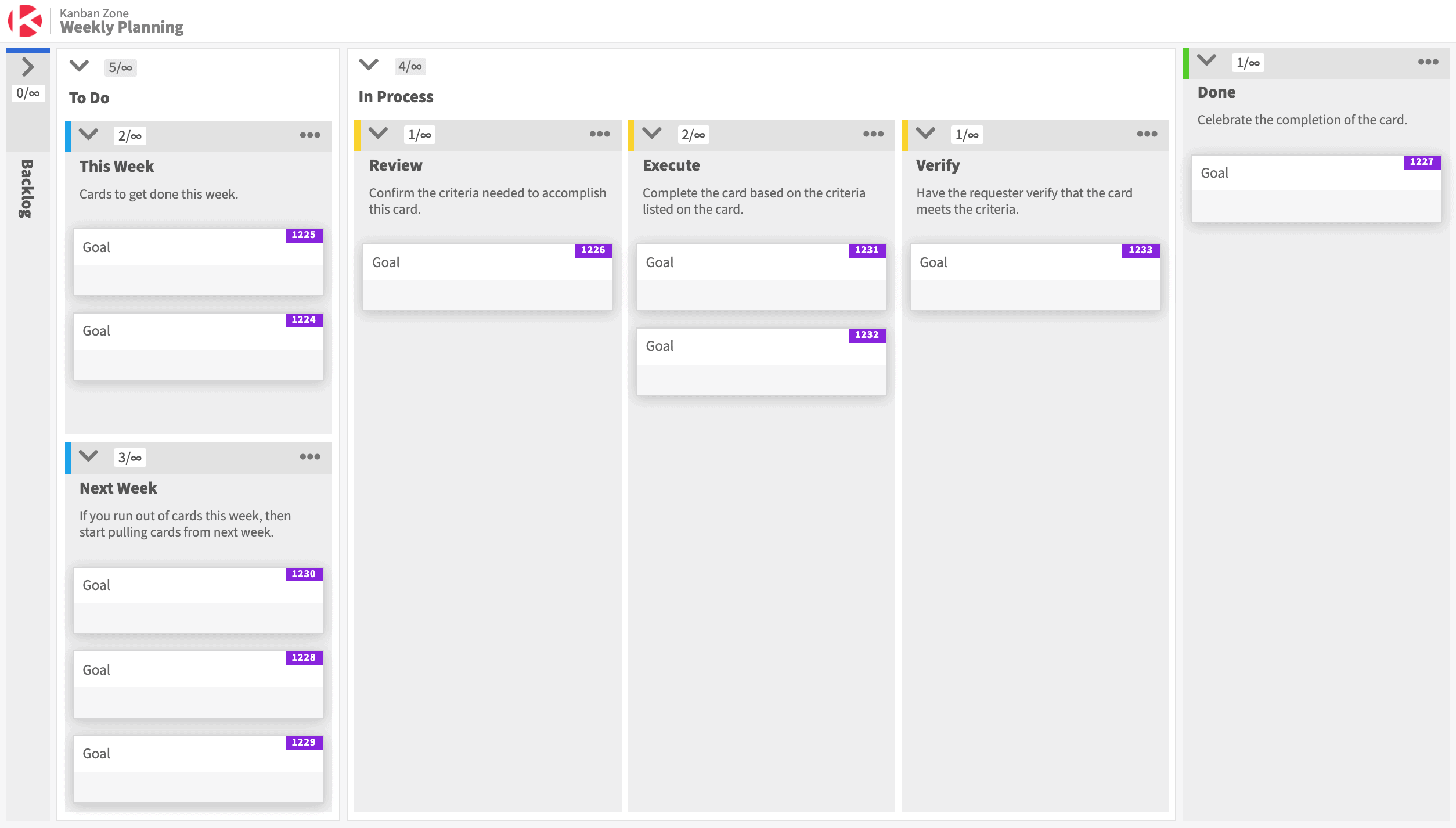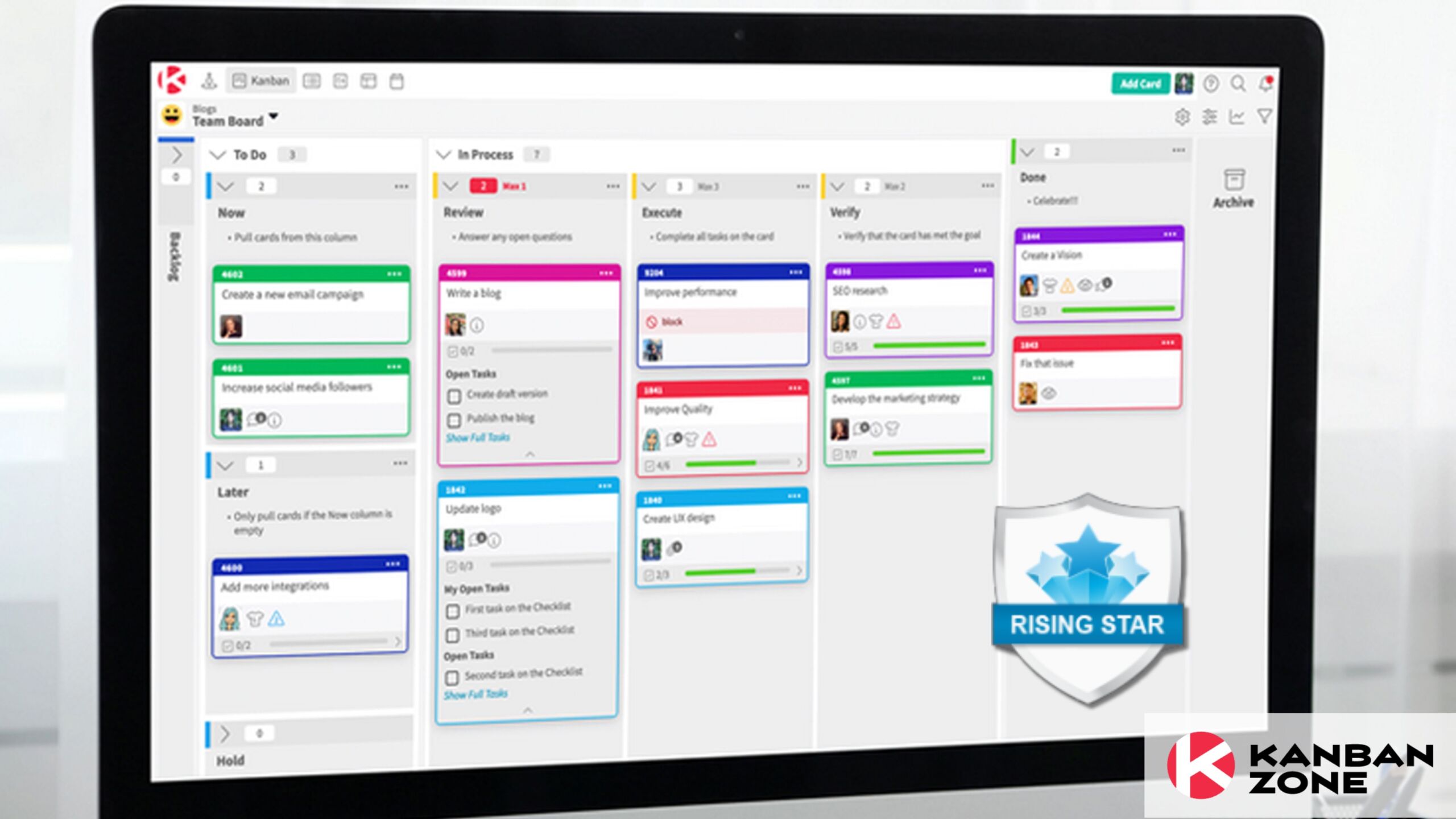
Weekly planning became obvious when I discovered both Agile methodologies and Stephen Covey. It was back in 2006 when I accepted my first position as an Agile coach for a large software organization, which also allowed me to become a master facilitator of The 7 Habits of Highly Effective People by Stephen Covey. It was fascinating that both philosophies focused on human behaviors and continuous improvement but also shared the need for weekly planning.
What’s great about planning weekly is that it’s the perfect lens to track progress because seven unique days provide the most simple and effective way to track progress using a small iteration. Yes, there are many levels of planning ranging from yearly strategic goals to daily tactical tasks. Still, when it comes down to getting traction, the weekly format is just the right size to plan, just far ahead without making too many course corrections to your plan.
Act I – The Weekly Compass® from Stephen Covey
 One of the best life lessons as a facilitator of The 7 Habits of Highly Effective People is to lead by example so that the examples provided to the students resonate more because they are real. This is why I started using The Weekly Compass®, but I quickly realized the incredible benefits of this technique, and I have been doing weekly planning since then.
One of the best life lessons as a facilitator of The 7 Habits of Highly Effective People is to lead by example so that the examples provided to the students resonate more because they are real. This is why I started using The Weekly Compass®, but I quickly realized the incredible benefits of this technique, and I have been doing weekly planning since then.
Put first things first is one of The 7 Habits of Highly Effective People. The best experiment to illustrate this concept is the Big Rocks presentation from Stephen Covey. By having clarity around your goals and planning first your big rocks aligned to these goals every week, you naturally start getting closer to your goals.
The format of The Weekly Compass® was great because it promoted the need to think of the key roles you play in your life and the four dimensions of renewal (physical, social/emotional, mental, and spiritual). I followed this format for a while because it helped me become more effective as a person, but then Agile methodologies like eXtreme Programming (XP) and Scrum came along… It was time to increase efficiency by doing weekly planning as a person within a team.
Act II – The sprint/iteration planning in Scrum/XP
Before there was software, project management was about using a predictive planning approach by sequencing project phases. With software, it became difficult to predict the outcome of a project because of the more elusive nature of envisioning software compared to hardware that you could touch.
With XP solely focused on software, it became obvious that software planning and releases were better achieved by using smaller planning cycles (iterations). With Scrum, these planning cycles are called sprints and can be set between 1 to 4 weeks. Suddenly the ideal way to get software built to satisfy the customer was to make small weekly plans and also introduce the Daily Scrum to stay on track and leverage knowledge during the week.
It was blissful to see work get broken down into manageable weekly increments of software that were prioritized on a weekly schedule. The best secret in Agile is to dedicate a few people to focus on work that doesn’t change for a short period of time. This weekly planning lens was again a key aspect of getting alignment and accountability while still focusing on creating positive human behaviors.
Finally, Kanban got a revival, and the spirit of continuous improvement in terms of both effectiveness and efficiency reached new levels.
Act III – Visualizing your week with Kanban
Just like Stephen Covey and the Agile Manifesto, Kanban is set in values and principles to guide human behaviors. What truly makes Kanban exciting in terms of weekly planning is its core properties:
- Visualize the work
- Set Work In Progress (WIP) limits
- Make the process of your work explicit
- Measure and manage the flow of work
- Continuously improve every aspect of your work
We showed above that The Weekly Compass® was a visual card that contained specific elements to identify the most important work to be accomplished within a week. In Kanban, the work is represented as individual cards that flow on a board (Kanban property #1). Each card can have a specific label to categorize each goal within the Stephen Covey dimensions or any category that you choose to visualize your cards.

To be fair, Stephen Covey did seek to visualize the week by merging his company with the Franklin Planner, but the work was mostly focused on a daily schedule. In Kanban, the work flows as fast as possible by respecting WIP limits (Kanban property #2). This means that based on the size of your team, there is an ideal limit of work to tackle concurrently so that it gets done most efficiently. This is where Kanban fully embraces the pull process, requiring an individual to work on one item to be completed before a new work item can be started. This ability to limit the work until it gets fully completed contributes to a better flow and, ultimately, better results over time.
The last three properties in Kanban are also helpful in weekly planning, but they provide longer ongoing benefits. By making the process explicit (Kanban property #3), you set your best practices directly within the board so that each card always follows the ideal level of scrutiny as it flows through the board. By measuring and managing the flow of work (Kanban property #4), you leverage metrics to fine-tune your process so that your results keep improving over time… This finally brings us to enacting the behavior of continuous improvement (Kanban property #5) to everything you do in relation to the work that flows on this board.
Try it for yourself…
Below is an example of a digital Kanban board created for weekly planning using one of the many templates available in Kanban Zone. We kept the process simple because it’s meant to be used as a template, but this flow will provide you with a great way to track your goals and get them done faster.
We have been using Kanban with many clients and received great feedback from individual users practicing Personal Kanban. Whether you are a single contributor or a team, the moment you start creating clear cards aligned with your goals and prioritize them on a Kanban board, the level of accountability and productivity will surprise you.
In the board template example above, we organize weekly planning by visualizing “This Week” and “Next Week.” The goal is to select cards you believe can be achieved within a week by placing these cards at the beginning of your week under the “This Week” column. We always recommend preparing additional cards under the “Next Week” column in case you complete the work planned for this week faster than expected.
At the end of the week, you will see if you accomplished what you planned. If all the cards that started in “This Week” are now in the “Done” column, then you had a great week and should celebrate your success. Every week, plan and review the results of your previous week. Over time, leverage your experience and metrics like the throughput report to set your weekly targets better.
Although we now believe that Kanban is the ideal solution for weekly planning, it requires structure and discipline from various sources, like Stephen Covey’s inspirational work and all the wonderful lessons from using Agile methodologies. The key is to embrace weekly planning in the way that works best for you.
Plan once a week, and deliver every day!
Learn to Work Smarter, Not Harder!
Get our top articles weekly.
Table Of Contents
Discover many more posts…








